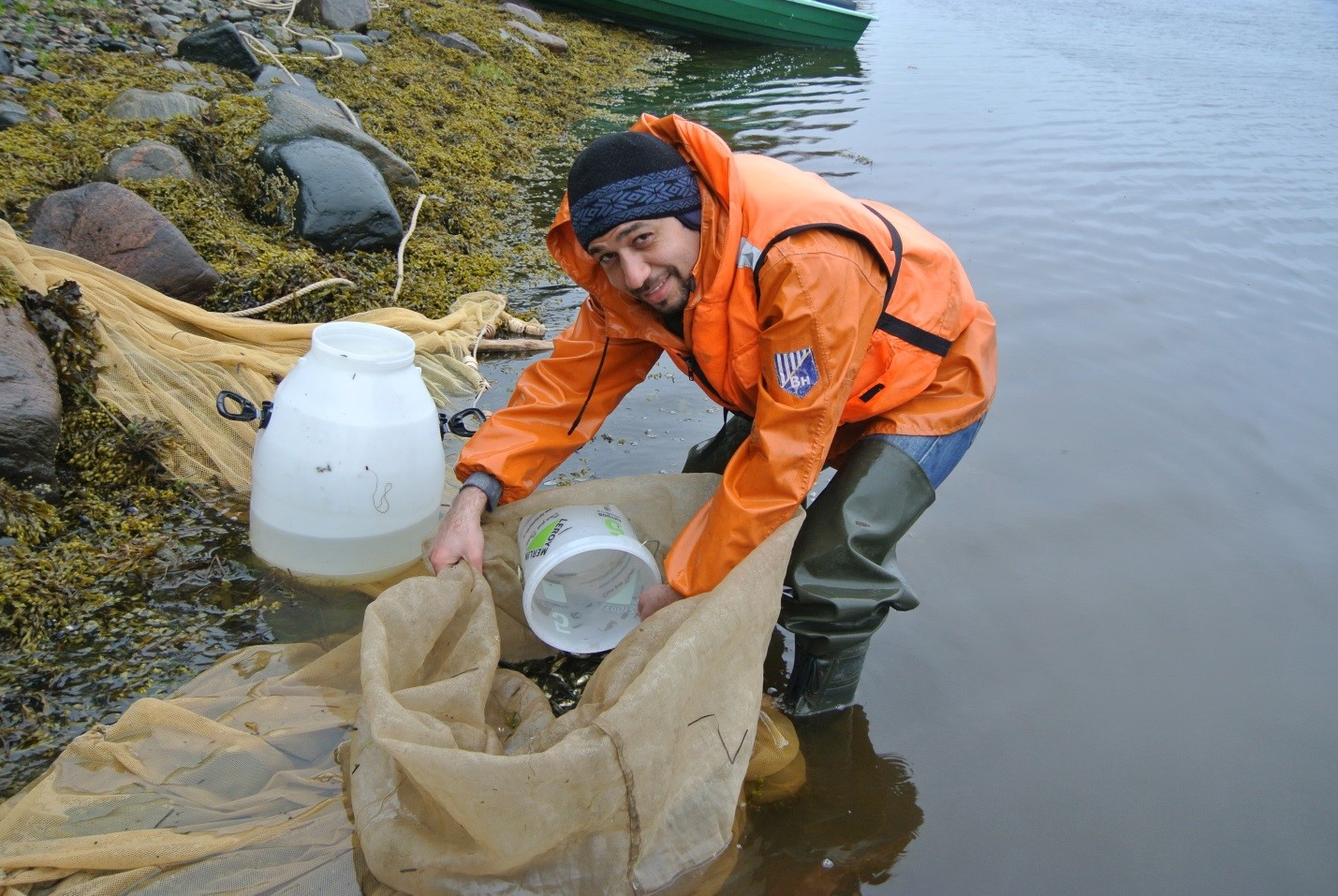
Stickleback and Africa
June is the beginning of our field work on stickleback. At this time, the fish come inshore for spawning, which is the most important period of its life cycle and, therefore, the most interesting and informative period for our research. This June, we plan to focus on studying of stickleback to find their home – homing. This is important both from the point of view of understanding the spatial structure of the population, and their spatial orientation ability. According to the results of tagging performed last years, we already know that they have homing. Fish, wintering somewhere in the open sea, come inshore in spring, choose spawning grounds, and if to catche them in two weeks and released at some distance, can find their “home”. This year we want to quantify their ability to homing – from which distance they can find the “house”, and how much time they need for that.
However, the first sampling led to the change of our plans. Based on the past experience, we planned to start working in the first half of June, but after careful examination of our first catch, we realized that it is too early to start the work – the males are still too pale, indicating that their preparedness for spawning is much lower than it was last year on the same dates. So we decided to wait a few more days. Hopefully the weather will improve.
This year, in addition to the usual participants – T. Ivanova, M. Ivanov, D. Laius, Ahmed Dorgam, a PhD student from Egypt, who will write a thesis on the population biology of the White Sea stickleback, works with us. Ahmed is accustomed to do field work under very different weather conditions – under the hot African sun at temperatures of about 35 degrees. But he is quite successfully adapting also to our northern, and not very hospitable (particularly this year), weather.
